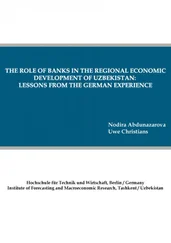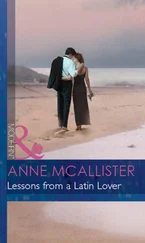James Watson - AVOID BORING PEOPLE - Lessons from a Life in Science
Здесь есть возможность читать онлайн «James Watson - AVOID BORING PEOPLE - Lessons from a Life in Science» весь текст электронной книги совершенно бесплатно (целиком полную версию без сокращений). В некоторых случаях можно слушать аудио, скачать через торрент в формате fb2 и присутствует краткое содержание. Жанр: Биографии и Мемуары. Описание произведения, (предисловие) а так же отзывы посетителей доступны на портале библиотеки ЛибКат.
- Название:AVOID BORING PEOPLE: Lessons from a Life in Science
- Автор:
- Жанр:
- Год:неизвестен
- ISBN:нет данных
- Рейтинг книги:5 / 5. Голосов: 1
-
Избранное:Добавить в избранное
- Отзывы:
-
Ваша оценка:
- 100
- 1
- 2
- 3
- 4
- 5
AVOID BORING PEOPLE: Lessons from a Life in Science: краткое содержание, описание и аннотация
Предлагаем к чтению аннотацию, описание, краткое содержание или предисловие (зависит от того, что написал сам автор книги «AVOID BORING PEOPLE: Lessons from a Life in Science»). Если вы не нашли необходимую информацию о книге — напишите в комментариях, мы постараемся отыскать её.
AVOID BORING PEOPLE: Lessons from a Life in Science — читать онлайн бесплатно полную книгу (весь текст) целиком
Ниже представлен текст книги, разбитый по страницам. Система сохранения места последней прочитанной страницы, позволяет с удобством читать онлайн бесплатно книгу «AVOID BORING PEOPLE: Lessons from a Life in Science», без необходимости каждый раз заново искать на чём Вы остановились. Поставьте закладку, и сможете в любой момент перейти на страницу, на которой закончили чтение.
Интервал:
Закладка:
Until Luria's first lecture, I had no idea what a virus was. Soon I knew they were very small, infective agents that multiplied only within living cells. Outside of cells, viruses are essentially inert. But once they enter a cell, a multiplication process is initiated that leads to a generation of hundreds to thousands of new progeny viral particles identical to the original parent particle. Unlike bacteria, viruses cannot be observed using conventional microscopes. Their sizes and shapes first became known following the invention of the much more powerful electron microscope in Germany just prior to the start of World War II. The first phages so examined had unexpected tadpole-like shapes, with polygonal heads attached to much thinner, tail-like appendages.
More than two decades earlier, H. J. Müller had speculated that viruses were, in fact, naked chromosomes that had acquired special structures for being transported from one cell to another. Supporting his conjecture was the finding in the mid-1930S that DNA, a soon-to-be-discovered major component of all chromosomes, also was a major component of the phages. Even more important was the 1944 discovery by Oswald Avery and his coworkers at the Rockefeller Institute in New York that DNA could transmit genetic markers in pneumonia bacteria. Conceivably much, if not all, of the genetic specificity of phages also resided in their DNA components.Luria's lectures were also particularly exciting for me because they frequently described his collaborations of the past six years with the German-born physicist Max Delbrück, whose ideas about the gene in the mid-1930S provided the essence of Erwin Schrödinger's What Is Life? How a gene is copied to yield an identical replica was now being extended by Luria and Delbrück to ask how a single phage particle gives rise to hundreds of identical progeny. In learning how phages multiply, Luria and Delbrück thought the fundamental mechanism of how genes are copied would also become known.
A key requirement of Luria's course was the term paper, which I chose to write on the effects of ionizing radiation on viruses. Luria had used X-rays to estimate the size of the then still submicroscopic phages when he worked in Paris in 1938-40, where he had fled when Mussolini, in an attempt to curry favor from Hitler, had begun his first serious persecution of Italy's Jews. Because only a single ionizing event is necessary to kill a phage, a minimal size of a phage can be calculated from the number of phage particles killed as a function of X-ray dose. The so-called target theory approach was previously used in 1935 by Max Delbrück to give an estimate of the size of Drosophila genes, and so I had no difficulty finding enough material to fill out my paper, as no original thought was expected. I was more worried I would be penalized for bad handwriting, but I got an A.
Not so easy was my math course, whose text was Advanced Calculus by Harvard's David Widder. Fortunately, Graves began to appreciate the much lower math aptitudes of his Indiana students in comparison to those he had been used to teaching at the University of Chicago.
What had threatened to be entirely above my head got easier, even occasionally satisfying toward the end. Helping matters was the presence in the class of a small, neat blonde with whom I could compare homework answers at the IU Union cafeteria. A grade of B was more than encouragement enough to continue the course through the spring term. Being able to pass a real math course was a big step forward for me, not only for its own sake but also for allowing me to hold my own with the growing number of physicists moving toward biology to find the secrets of the gene.Not at all surprising, but nevertheless satisfying, was an A+ in animal ecology. Teaching it was Lamont Cole, a mathematical ecologist, newly recruited by Fernandus Payne to broaden the fish-dominated ecology outlook of IU. I loved learning details of animal adaptation to their environments as well as taking weekly field trips to observe how remarkably specific were the adaptations of certain species to certain niches. On a trip to one of the limestone caves that peppered the rolling hills near Bloomington, armed with rubber boots and several coal miner's lamps, we squeezed through narrow openings into sometimes vast, waterlogged cavities in search of blind cave fish. In the absence of light, there was no selective pressure against the emergence of mutant fish lacking not only scale pigments but also functional eyes. It was through studying blind cave fish that the Indiana zoologist David Starr Jordan rose to prominence. A scientist of great charisma, he would lead IU before being chosen in 1891 as the first president of Stanford University. By my time at IU, however, Jordan was locally best known for quipping that every time he learned the name of a student he forgot the name of a fish.
IU's traditional preoccupation with fish reflected the presence of thousands of lakes dotting the Indiana landscape, ranging from tiny farmer's ponds to lakes many miles wide whose shores were lined with vacation cabins. When I was a child, my mother's Gleason relatives occasionally took us fishing on lakes near Michigan City where on good days we would hook and later fry more bluegill, perch, and bass than we could easily eat. On other days, we would get no bites and go home bitter. The State Department of Conservation began helping the
university support its biological station at Winona Lake, where fish yield was measured in units called “fish pole hour.” While there were lakes generally yielding at least several fish per pole hour, there was also the very sad Oliver Lake, where more than ten hours would be needed to bring home a single fish.By then I was routinely traveling on foot, three times daily, the two miles from my Rogers Center dorm to the science complex and back again. Because of the overcrowding, everyone in Rogers had a roommate and those of us with lab connections tended to avoid our dorm rooms except for sleeping. On these long walks, I liked to go by Jordan Avenue, site of the most desirable sororities, where I would spot girls much prettier than most to be seen in science buildings. For a break from homework or studying for exams, I would occasionally go birding with Palmer Skaar, a fellow new graduate student, who could identify the local birds as well as I. Best of all were the basketball games that began with IU predictably skunking neighboring DePauw. In contrast, most Big Ten games were cliffhangers until the tense closing moments of the last quarter. Also fun, though more intellectually demanding, were the informal Friday night seminars on protozoan genetics that Tracy Sonneborn had begun having at his home to interest the new group of graduate students in his lab's research.
The more I learned about phages, the more I became ensnared by the mystery of how they multiplied, and even before the fall term was half over I knew I did not want to do my degree with Müller. Nor did Muller's work, which seemed increasingly outdated, attract any of the new students his famous presence had drawn to IU that year. Most were captured by Tracy Sonneborn's infectious enthusiasm for the tiny, one-celled, ciliated protozoan Paramecium. I, however, could see no way for paramecia to compete with phages in pursuit of the fundamental nature of the gene. I therefore had to tell Sonneborn, somewhat sheepishly, that I would be working with Luria, fearing that this would spell the end of my welcome at his Friday night protozoan soirees. But he very graciously gave no evidence of feeling spurned and told me that I could keep coming as long as I wanted.
As soon as spring term started, I began learning how to infect E. coli
cultures with the T2 phage and to count the number of bacteria that had phages multiplying within them. To my great benefit, I also became friends with thirty-three-year-old Renato Dulbecco, who, like Luria, had trained as an M.D. in Turin and who had come the previous fall to learn how to work with phages. With his family still in Italy, Renato was almost always in the lab and could give me needed advice when the phage counts were not what I expected.With a light spring course load, I started assisting in the bird course, where help was clearly needed given the prevailing fish bias. There was no real bird expert among the zoology faculty, and so the course was taught by Bill Ricker, the department's best fish man. Long regarded as a gut course—anyone who went on the field trips could expect a passing C—it was now used by physical education majors in the new academic division called Health, Physical Education, and Recreation (HPER) to fulfill their science requirement. In fact, this division came into existence the year before to prevent a repetition of the worst tragedy in IU's history. Robert Herchenmeyer, the best football player ever to attend IU and who in the fall of 1945 led it to its first and only Big Ten championship, flunked out the following spring. Yet for the sake of appearances, HPER majors had to take several courses with nonathletes. And so I found myself helping two jocks learn to identify birds seen on previous Saturday morning field trips and thereby pass the final. For my trouble, I got a look at a number of birds virtually unseen in Chicago, such as the Kentucky warbler, the Bachman sparrow, and the pileated woodpecker, the most impressive of all the birds of southern Indiana.
Читать дальшеИнтервал:
Закладка:
Похожие книги на «AVOID BORING PEOPLE: Lessons from a Life in Science»
Представляем Вашему вниманию похожие книги на «AVOID BORING PEOPLE: Lessons from a Life in Science» списком для выбора. Мы отобрали схожую по названию и смыслу литературу в надежде предоставить читателям больше вариантов отыскать новые, интересные, ещё непрочитанные произведения.
Обсуждение, отзывы о книге «AVOID BORING PEOPLE: Lessons from a Life in Science» и просто собственные мнения читателей. Оставьте ваши комментарии, напишите, что Вы думаете о произведении, его смысле или главных героях. Укажите что конкретно понравилось, а что нет, и почему Вы так считаете.












